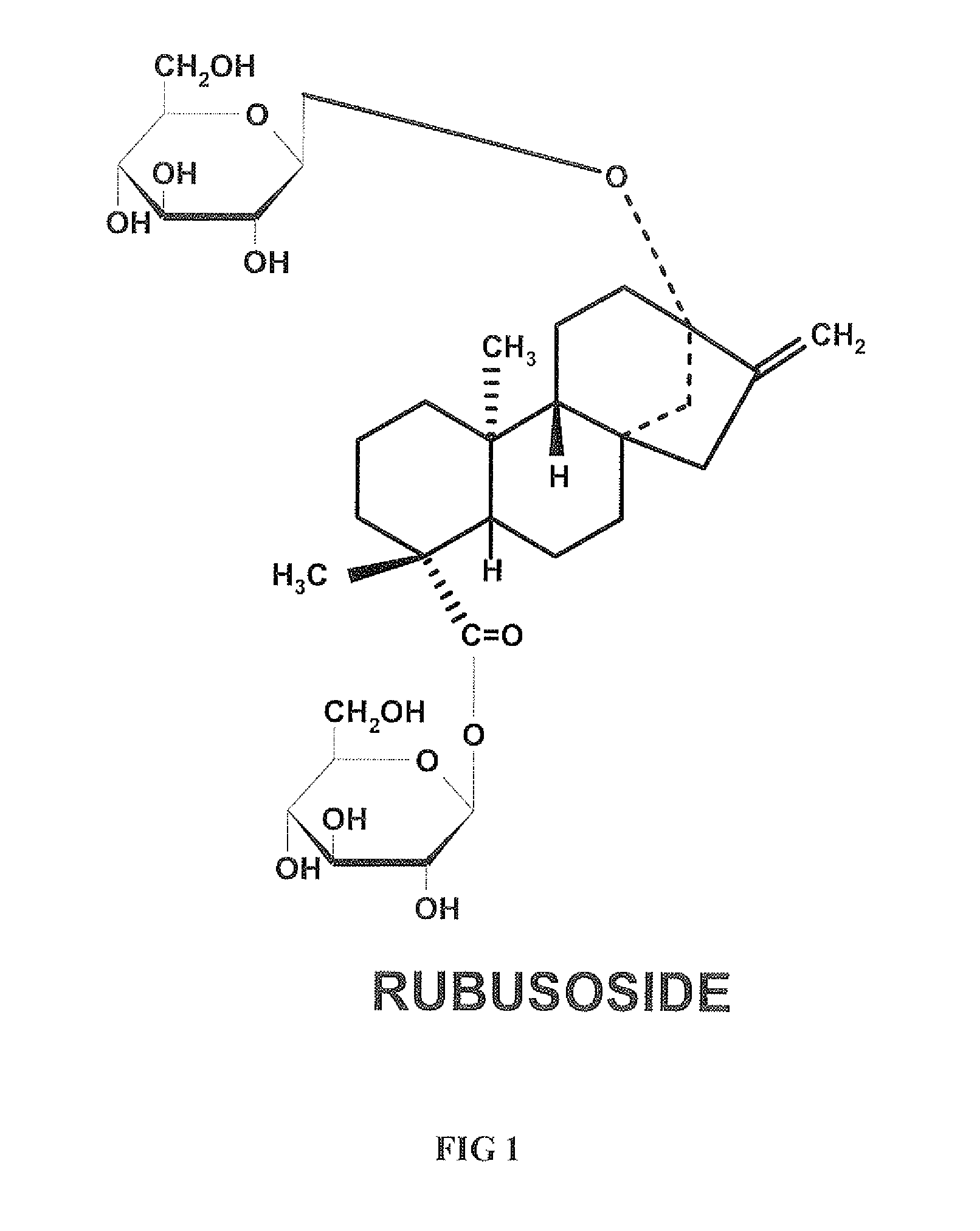High-Purity Rubusoside And Process For Purification Of The Same
a technology of rubusoside and process, which is applied in the field of process separation and purification of rubusoside from rubus suavissimus s. lee plant extract, can solve the problems of limiting their use in mainstream products and inability to employ chromatographic separation techniques in large-scale production
- Summary
- Abstract
- Description
- Claims
- Application Information
AI Technical Summary
Benefits of technology
Problems solved by technology
Method used
Image
Examples
example 1
Purification of Rubusoside
[0076]2 kg of Rubus suavissimus extract produced by “Guangzhou Wei Guan Trade Co., Ltd” (China), and containing 40.6% (on dry basis) rubusoside was dissolved in 6 liters of 98% methanol and the mixture was heated to 60° C. and maintained for 10 min. Then the mixture was cooled to 10° C. at a rate of 10° C. per hour. During the cooling the mixture was subjected to continuous moderate agitation. Starting from about 15° C. fine crystals were formed. The amount of crystals subsequently increased. The mixture was incubated at 10° C. during 24 hrs. The crystals were separated by filtration and washed on the filter by pure methanol preliminarily chilled to 4° C. The obtained crystals were dried under vacuum at 80° C. to yield about 850 g crystals with 82.3% rubusoside content (dry basis).
example 2
Purification of Rubusoside
[0077]1 kg of Rubusoside prepared as per EXAMPLE 1, with 82.0% Rubusoside content, was dissolved in 4 liters of 85% methanol at 70° C. Then 50 g of activated carbon was added to mixture and maintained at 70° C. for 20 min. The carbon was removed through Lab press filter and the obtained decolorized filtrate was heated to 70° C. and maintained for 10 min. Then the mixture was cooled to 10° C. at a rate of 10° C. per hour. During the cooling the mixture was subjected to continuous moderate agitation. Starting from about 15° C. fine crystals were formed. The amount of crystals subsequently increased. The mixture was incubated at 10° C. during 24 hrs. The crystals were separated by filtration and washed on the filter by pure methanol preliminarily chilled to 4° C. The obtained crystals were dried under vacuum at 80° C. to yield about 790 g crystals with 96.3% rubusoside content (dry basis).
example 3
Refining of Rubusoside
[0078]500 g of Rubusoside prepared as per EXAMPLE 2 was suspended in 1000 mL of 92% methanol at room temperature. The mixture was heated and maintained at 30° C. during 48 hours. The crystals were separated by filtration and washed on the filter by pure methanol. The obtained crystals were dried under vacuum at 80° C. to yield about 450 g crystals with 98.5% rubusoside content (dry basis).
PUM
| Property | Measurement | Unit |
|---|---|---|
| temperature | aaaaa | aaaaa |
| temperature | aaaaa | aaaaa |
| temperature | aaaaa | aaaaa |
Abstract
Description
Claims
Application Information
 Login to View More
Login to View More - R&D
- Intellectual Property
- Life Sciences
- Materials
- Tech Scout
- Unparalleled Data Quality
- Higher Quality Content
- 60% Fewer Hallucinations
Browse by: Latest US Patents, China's latest patents, Technical Efficacy Thesaurus, Application Domain, Technology Topic, Popular Technical Reports.
© 2025 PatSnap. All rights reserved.Legal|Privacy policy|Modern Slavery Act Transparency Statement|Sitemap|About US| Contact US: help@patsnap.com


